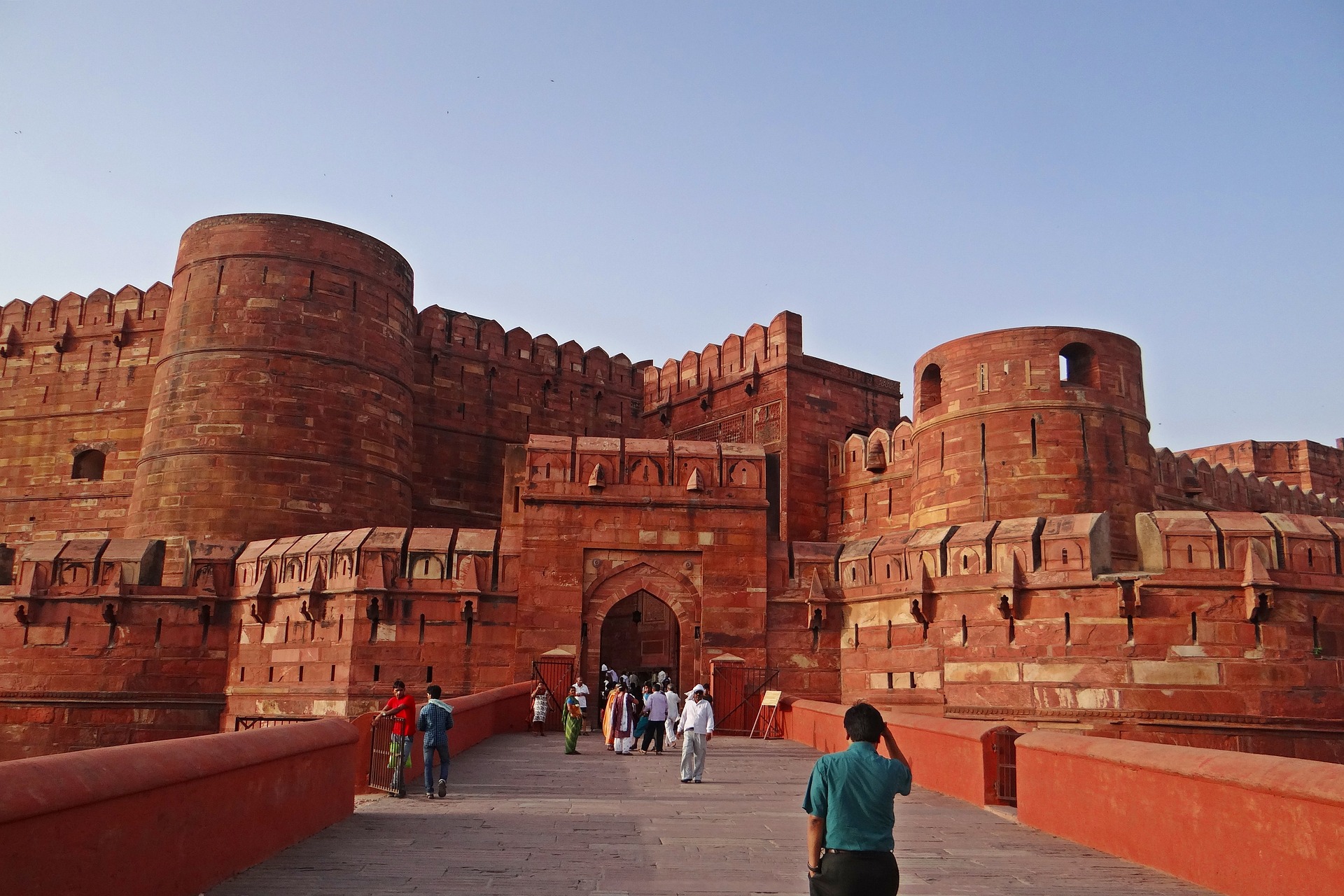
Agra Fort
The prominence of the Taj Mahal often overshadows the fact that Agra boasts one of India’s finest Mughal forts. As you step through the numerous courtyards of this grand red-sandstone and marble fortress, the magnitude of its construction dawns on you.
The Agra Fort is a historic and iconic monument in India, and it offers a wealth of interesting aspects and features. Here are 10 fascinating aspects of the Agra Fort as you prepare for your visit:
- Historical Significance: Agra Fort is a UNESCO World Heritage Site and holds great historical significance. It served as the main residence of the Mughal emperors for several generations. Read article
- Architectural Marvel: The fort is a prime example of Mughal architecture, featuring a mix of Islamic, Persian, and Indian styles. Its intricate designs, use of red sandstone, and white marble inlays are stunning. Read article
- Sheesh Mahal (Mirror Palace): One of the most famous parts of the fort is the Sheesh Mahal, a chamber entirely decorated with intricate mirror work. It is said that candlelight would create a dazzling effect within the chamber. Read article
- Jahangir’s Hauz: This is a large bowl carved out of a single block of stone. It was used to store and cool rosewater for Emperor Jahangir. Read article
- Diwan-i-Khas (Hall of Private Audience): This hall is known for its impressive pillars and a central column where the emperor would hold private meetings and discussions. Read article
- Diwan-i-Am (Hall of Public Audience): This is where the emperor would address the general public and hear their grievances. The hall features an elevated throne made of marble.
- Musamman Burj: This is a beautiful octagonal tower with stunning views of the Taj Mahal. It was the place where Shah Jahan was imprisoned by his son Aurangzeb.
- Historical Events: The Agra Fort witnessed various historical events, including the imprisonment of Shah Jahan, who gazed at the Taj Mahal from here during his final years.
- Mughal Gardens: The fort houses well-maintained Mughal gardens, providing a serene escape within the fort’s walls.
- Strategic Location: The fort is strategically located on the banks of the Yamuna River, offering both protection and a stunning view of the Taj Mahal, located just a few kilometers away.
Agra Fort is not only a testament to Mughal grandeur but also a place where history, architecture, and culture come together, making it a must-visit attraction for tourists and history enthusiasts.
About Agra Fort
Construction began along the Yamuna River’s bank in 1565 under Emperor Akbar, replacing an earlier fort. Subsequent additions, notably by his grandson Shah Jahan, were crafted using his favored white marble. Initially conceived as a military stronghold, Shah Jahan transformed it into a palace, only to be imprisoned here for eight years by his son Aurangzeb after his usurpation in 1658.
The fort’s colossal double walls, standing over 20m tall, stretch for 2.5km. Originally, the Yamuna flowed by its eastern edge, where the emperors had their own bathing ghats. A maze of buildings, akin to a city within a city, fills it, including extensive underground portions. Over time, many structures fell to the ravages of Nadir Shah, the Marathas, the Jats, and the British, who garrisoned the fort. Today, much of it remains military territory, off-limits to the public.
The Amar Singh Gate, the sole entry point, serves as the ticket booth. Its intricate design confounded attackers who crossed the first line of defense, a moat filled with crocodiles.
Continuing along the main pathway, you encounter the grand Jehangir’s Palace, a red-sandstone marvel. Before it lies Hauz-i-Jehangir, a massive stone bowl for bathing. Further along, the Khas Mahal, a beautiful marble pavilion and pool, was Shah Jahan’s residence, offering framed views of the Taj Mahal.
The Anguri Bagh courtyard, recently restored, leads to a locked entrance that descends into a two-story labyrinth of underground chambers – once Akbar’s harem. Nearby, the Shish Mahal boasts walls adorned with tiny mirrors.
To the north, the Mathamman Burj, an octagonal tower and palace, housed Shah Jahan during his imprisonment, affording a view of the Taj. Nearby, the closed Mina Masjid served as his private mosque.
Within the courtyard along the fort’s east wall stands Diwan-i-Khas, reserved for dignitaries. This hall once held the Peacock Throne, inset with gems including the famous Koh-i-noor. Takhti-i-Jehangir, a large black rock slab, overlooks the river and Taj Mahal.
Moving north, Nagina Masjid, an exquisite white-marbled mosque, appears, built by Shah Jahan for the court ladies. A hidden doorway leads to the scallop-arched Diwan-i-Am, where domestic governance took place. Adjacent is the grave of John Colvin, a lieutenant-governor, and the Moti Masjid, presently inaccessible. Return to the Amar Singh Gate.
Reach the fort from Taj Ganj via Shah Jahan Park or an autorickshaw. No food allowed. The fort opens 30 minutes before sunrise, ticket office 15 minutes before. Last entry: 30 minutes before sunset.